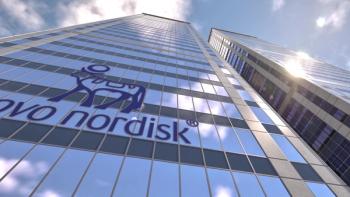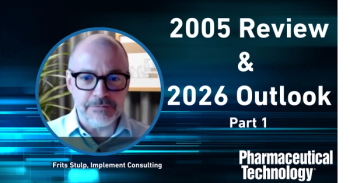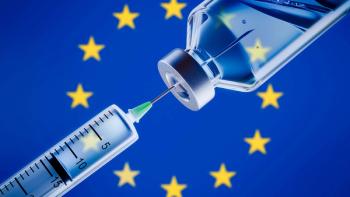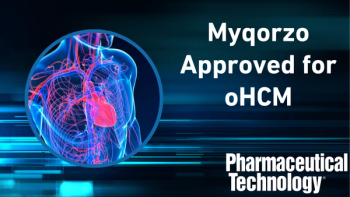
PTSM: Pharmaceutical Technology Sourcing and Management
- PTSM: Pharmaceutical Technology Sourcing and Management-06-22-2007
- Volume 3
- Issue 6
Opportunities Abound for Generic Drugs
Double-digit growth is projected for the US generic drug market, and the industry positions for opportunities in biosimilars.
Fundamentals are strong for the US generic drug industry. Double-digit growth is projected, and growth for active pharmaceutical ingredients (APIs) for generic drugs outpaces growth for APIs for innovator drugs. Also, the industry is positioning for further growth with growing support for biosimilars.
Drugs with sales of $160 billion are expected to come off patent by 2015, according to
Several top-selling drugs either lost US patent protection in 2006 or will in 2007.
In addition to Zocor in 2006 and Norvasc and Risperdal in 2007, other key drugs recently came off patent or are slated to come off patent. In, 2006, key drugs that came off patent included Pfizer's "Zoloft" (sertraline),
Rising influence of generic drugs
2005 was a watershed year for the US generics industry. In 2005, for the first time in US history, generic prescription volume was higher than branded volume. Generic prescription grew by 13% in 2005, compared with 7% growth for the overall market, according to data from
The rising influence of the generic drug industry on the US pharmaceutical industry is evident by the positioning of generic drug manufacturers among the top 20 pharmaceutical companies, based on total US dispensed prescriptions in 2005. Three generic drug manufacturers,
Other generic drug companies making the top 20 companies in 2005 were Ivax Corporation (acquired by Teva Pharmaceuticals in 2006), which pulled in at number 8, with 109.6 million prescriptions,
Opportunities for APIs
The growth in generics drugs is reflected in the growth for active pharmaceutical ingredients (APIs) to the generic drug indusry. In 2005, generic APIs accounted for 43.5% (or $13.5 billion) of the total merchant API market (including both APIs and advanced intermediates), according to the
Global demand for APIs as a whole (both branded or innovative and generic APIs) is expected to increase at an average annual rate of 8.2% over the next five years, according to CPA. The merchant market for APIs is expected to reach $46 billion by 2010, with demand for generic APIs growing faster than APIs for branded or innovative drugs. Demand for generic APIs is projected to increase at an annual average rate of 10.9% over the next five years to reach $22.7 billion by 2010. In contrast, demand for APIs for branded or innovative drugs is forecast to increase at an annual average rate of 5.9% to reach $23.3 billion by 2010. This differential in growth rates will shift the balance of API power to near parity by 2010 with generic APIs at 49.4% and branded or innovative APIs at 50.6%, according to CPA (1).
Biogenerics or biosimilars
Biosimilars are an emerging opportunity for the US generics market as the industry awaits a regulatory pathway for biogeneric drugs. As biologics assume a larger share of Big Pharma's ethical drug sales, the impact of biogenerics (known as biosimilars in Europe) will be key. Because of biogeneric erosion, the market for branded biologics in four key classes in the United States is expected to decline, according to
"Epogen" (epoetin alfa) by
Patents for insulin for
hGH products that face near-term US patent expiration include Eli Lilly's "Humatrope" and Pfizer's "Genotropin" in 2008,
Regulatory considerations for biogenerics
The approval of
Sandoz received approval from FDA for "Omnitrope" (somatropin [rDNA origin]), as a follow-on version of a previously approved recombinant human growth hormone (rhGH) product. FDA's decision followed the approval of Omnitrope by European regulatory authorities in April 2006. Sandoz had filed a lawsuit against the FDA in September 2005 seeking a ruling on its new drug application, which it filed in July 2003.
In approving Omnitrope, FDA emphasized that the drug is not a generic biologic because it is not rated as therapeutically equivalent to any of the other approved human growth hormone products. Instead, FDA characterized the drug as a "follow-on protein product" and stressed that its approval did not create a new pathway for follow-on versions of all protein products (3).
"The approval of Omnitrope in a 505 (b)(2) application does not establish a pathway for approval of follow-on products for biological products licensed under Section 351 of the Public Health Service Act, nor does it mean that more complex and/or less well understood proteins approved as drugs under the Food, Drug, and Cosmetic Act could be approved as follow-on products," said FDA in its ruling. "The majority of protein products are licensed as biological products under the Public Health Service Act, not approved as drugs under the Food, Drug, and Cosmetic Act. There is no abbreviated approval pathway analogous to 505 (b)(2) of 505 (j) of the Act for protein products licensed under Section 351 of the Public Health Service Act. Such a pathway for the approval or licensure of follow-on protein products under the Public Health Service Act would require new legislation (3).
FDA also pointed out that its approval of Omnitrope does not involve the regulatory and legal questions raised with follow-on products licensed under the Public Health Service Act. These issues involve: protein products with unknown or multiple active ingredients (rhGH products have one known active ingredient, somatropin); protein products that are difficult to characterize (currently available technologies allow rhGH to be extensively characterized); protein products that are glycosylated (rhGH is not glycosylated); and protein products that have an unknown mechanism of action (rhGH's mechanism of action is well understood) (3).
In its statement, the agency also pointed out that Omnitrope is not FDA's first approval of a follow-on protein product. Other follow-on protein products approved under section 505 of the Food, Drug, and Cosmetic Act include: "GlucaGen"(glucagon recombinant for injection), "Hylenex" (hyaluronidase recombinant human), "Hydase" and "Amphadase"(hyaluronidase), and "Fortical" (calcitonin salmon recombinant) nasal spray (3).
Although the regulatory framework for biosimilars is more defined in Europe, the United States is moving toward standardized pathways for biogenerics, although this is a slow and evolving process, which is expected to continue over the next few years, with several legislative initiatives under consideration. The key issue for the US market, therefore, relates to the vast majority of biologics, which are regulated under biologics license applications (BLAs) rather than NDAs (1).
References
1. P.Van Arnum, "The Changing Fortunes of APIs," Pharm. Technol. 31 (1), 52–58, 2007.
2. E. Greb, D. McCormick, P. Van Arnum, "Pharmaceutical Technology's 2005 Manufacturing Rankings," Pharm. Technol. 30 (7), 36–50, 2006.
3. FDA, "Omnitrope (somatropin [rDNA origin]) Questions and Answers," (Rockville, MD, 2006),
Articles in this issue
over 18 years ago
Peopleover 18 years ago
Is Your Company Lucky or Smart?over 18 years ago
Agreements and contractsover 18 years ago
Mergers, acquisitions, and restructuringover 18 years ago
Pfizer CentreSource Moves Forward with Asian Supply Pactover 18 years ago
ExpansionsNewsletter
Get the essential updates shaping the future of pharma manufacturing and compliance—subscribe today to Pharmaceutical Technology and never miss a breakthrough.




